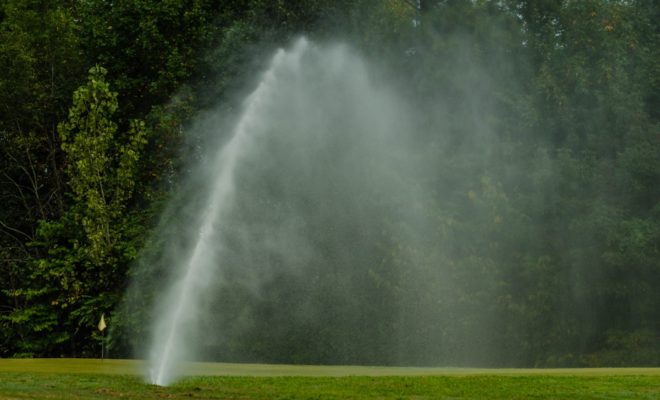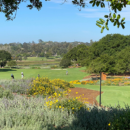The Old College Try: A Suggested Path Forward for Muni Golf

Golf comes in many varieties, from private clubs like my golf holidays portugal to commercially operated public facilities to municipal courses owned and operated by local government. It is the last two that need the most help if they are to survive. And local muni courses are well worth saving. But only if you think it’s important to save the game.
Every golfer knows what we’re talking about. It’s the local muni where their mom dropped them off when they were a kid. Or the local muni that captured their attention when they were just out of school and looking for an affordable recreational activity, one they might be able to enjoy for the rest of their life.
It’s also the local gem, and every city has at least one. Indeed, many California cities have more than one. Their proliferation has done more to grow the game than any other single factor. Golf always has been and always will be more a participation sport than a spectator sport, and participants need affordable, accessible places to participate, particularly when they’re trying new activities on for size and fit.
Over the years, many of these facilities have fallen into various stages of disrepair, and they need our collective help if they are to survive for future generations.
Although there have been some heroic breakthrough restoration efforts in places like Chicago, Washington D.C., Palm Beach, and Madison, they have been isolated “one off” projects that are dependent upon the kindness of a handful of charitable champions who possess the requisite money and passion to fund them. They are very few and far between.
Sadly, there has been no sustained national funding campaign to rescue municipal golf generally — nothing of an organized, sustained, institutionalized nature. While we would never counsel golfers and golf organizations to cease making the case for the societal value of the municipal golf courses, or suggest the pursuit of only one rescue strategy, the hard truth is that local governments are financially overburdened with other pressing needs and golf has done little to burnish its credentials with the nation’s public sector.
Preserving a muni golf course may not occupy a high place on a local politician’s agenda, especially in the post-COVID-19 years. But it does occupy a central place on our agenda. And while there may be no one answer to our dilemma, there is an overlooked philanthropic paradigm that has been staring us in the face for a long time.
THAT IS WHY WE NEED TO CALL ON GOLFERS TO SUPPORT THEIR LOCAL MUNIS IN THE SAME FASHION THAT COLLEGE ALUMNI ARE CALLED UPON TO SUPPORT THEIR BELOVED SCHOOLS.”
The fact is that America’s colleges and universities survive because of alumni support. Every year, massive funding drives take place on every campus, engaging alumni to contribute to the educational institution that launched their careers and lives. That’s exactly how new buildings are funded, not to mention the laboratories and research facilities inside them, as well as the endowed professor-ships that ensure vibrant teaching.
We’ve seen in real time how alumni rise to the challenge of being socially responsible philanthropists by contributing the resources necessary for their beloved schools to fulfill their educational and social missions. It happens annually from coast to coast in the United States, and as state governments continue to reduce funding of their state colleges and universities, alumni of those colleges and universities give more to make up the difference, as do many of the industries that derive benefit from the graduates they produce.
Government-owned golf courses need the same type of assistance to survive. A local muni, for example, may have more potential to improve the lives of “at risk” kids and their families than other municipal aid programs; wit-ness the myriad amateur association, PGA Section and First Tee programs that have emerged around the country.
These crucial enrichment programs need venues in order to succeed, and that is precisely why we need to aggressively reach out to the “golf alumni” to give back — in particular, by asking successful folks who grew up playing muni golf as kids to come to the rescue of the places that gave them a start in the game.
Each of us who has written a check to our favorite college or university knows what it feels like to make such a gift. It is an uplifting experience for both the giver and the institution(s) they support, because there are few better causes than providing something meaningful to the next generation.
That is why we need to call on golfers to support their local munis in the same fashion that college alumni are called upon to support their beloved schools. We need to do this now, for it may well be the only way that the muni courses we love can stave off asphyxiation when local officials turn to other, more pressing financial and recreational needs.
Golfers must understand that nothing is free. So too must the businesses that derive revenue from the game and the organizations that purport to represent those golfers (or govern them, as the case may also be). If golfers want to see their favorite muni golf course endure and flourish — just like they want their college or university, not to mention other valued local institutions such as art museums, opera/ballet companies, symphony orchestras, even the zoos our children visit, to endure and flourish — they have to join in the collective effort to preserve these special places. And the game’s governing institutions and commercial beneficiaries have to participate in the effort as well, if not directly then at least as facilitators, aggregators and organizers of golfers’ contributions.
Given the impressive demand stimulated by COVID-19, now is the time to figure out effective ways to accommodate and support increased participation, including outreach programs to golf’s “alumni,” lest the game lose its best opportunity in decades for meaningful growth.










